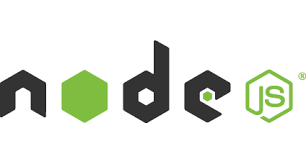by Luke P. Issac
on October 21, 2015
XAMPP is an open source, easy to use and easy to install stack that contains Apache webserver, MySQL database, PHP compiler and Perl.
MongoDB is one of the most widely NoSQL database in market today. We often end up in a situation where we might find it useful to set up mongodb also along with PHP in the XAMPP stack.
Since mongoDB is not an integral part of this stack, we have to set it up manually as the XAMPP installer is not going to take care of it for you.
[continue reading…]
by Ramesh Natarajan
on October 20, 2015
 Node.js framework is very lightweight and does not use threads.
Node.js framework is very lightweight and does not use threads.
Node.js is an event driven framework. It is also asynchronous.
Using Node.js developers can write scalable application without having to worry about writing logic to take care of thread related tasks.
This article explains two methods to Install Node.js on your Linux system.
[continue reading…]
by Karthikeyan Sadhasivam
on July 28, 2015
 ZFS has combined volume manager and filesystem with several advanced features.
ZFS has combined volume manager and filesystem with several advanced features.
This is the first part in a series of articles on ZFS.
In the article, we’ll provide an high level introduction to ZFS, explain how to install ZFS on linux, create a ZFS pool, and several ZFS zpool commands.
[continue reading…]
by Luke P. Issac
on July 22, 2015
If you are a developer, while developing an interactive web application, you may find yourself writing similar (or same) code over and over again. In these situations, the need for reusability arise. At the same time you may also face scoping and namespacing issues.
Similarly, there are many other cases where you need a portable code so that the same functionality can be implemented in some other project.
One of the solution to these types of problem is to write jQuery plugin.
[continue reading…]
by Karthikeyan Sadhasivam
on July 21, 2015
 Puppet is used to automate several routine sysadmin configuration tasks.
Puppet is used to automate several routine sysadmin configuration tasks.
Puppet in an enterprise grade configuration management system.
It allows you to define the state of your IT infrastructure. Once it is defined, Puppet will automatically enforce the correct state on an on-going basis.
[continue reading…]
by Karthikeyan Sadhasivam
on April 13, 2015
 yum is for CentOS and Redhat.
yum is for CentOS and Redhat.
apt-get is for Debian and Ubuntu.
In the same way, zypper is for SUSE Linux.
Zypper is a command line tool for package management in OpenSUSE and SUSE Enterprise Linux platforms.
[continue reading…]
by Luke P. Issac
on April 8, 2015
 Angular.js is a client-side javascript framework developed and maintained by Google.
Angular.js is a client-side javascript framework developed and maintained by Google.
It is a MVW ( Model View Whatever ) framework.
It gives us the flexibility to choose the design pattern that we want to use in our web application.
It is introduced to make static html dynamic. In other words, it updates the view of the web application in sync with any change in the data ( Model ). It makes the view data driven.
[continue reading…]
by Karthikeyan Sadhasivam
on March 19, 2015
In the first part, we explained in detail on how to install and configure 2 Node RedHat Cluster.
We covered the following high-level steps in the previous tutorial:
- Install and start RICCI cluster service
- Create cluster on active node
- Add a node to cluster
- Add fencing to cluster
- Configure failover domain
- Add resources to cluster
In this tutorial, we’ll cover the following high-level steps to finish the cluster setup:
[continue reading…]

 Node.js framework is very lightweight and does not use threads.
Node.js framework is very lightweight and does not use threads.  ZFS has combined volume manager and filesystem with several advanced features.
ZFS has combined volume manager and filesystem with several advanced features. Puppet is used to automate several routine sysadmin configuration tasks.
Puppet is used to automate several routine sysadmin configuration tasks.


 My name is Ramesh Natarajan. I will be posting instruction guides, how-to, troubleshooting tips and tricks on Linux, database, hardware, security and web. My focus is to write articles that will either teach you or help you resolve a problem. Read more about
My name is Ramesh Natarajan. I will be posting instruction guides, how-to, troubleshooting tips and tricks on Linux, database, hardware, security and web. My focus is to write articles that will either teach you or help you resolve a problem. Read more about